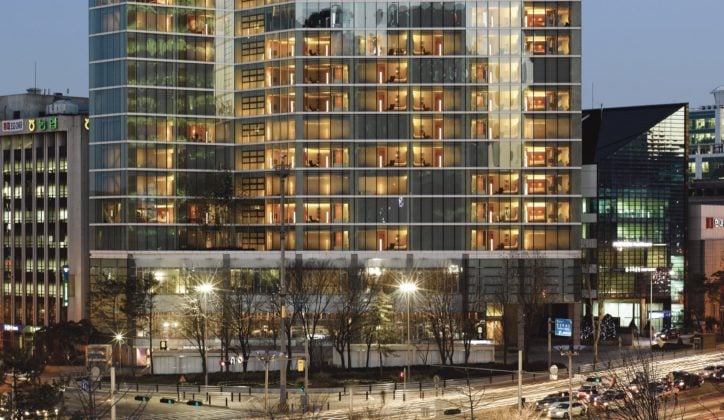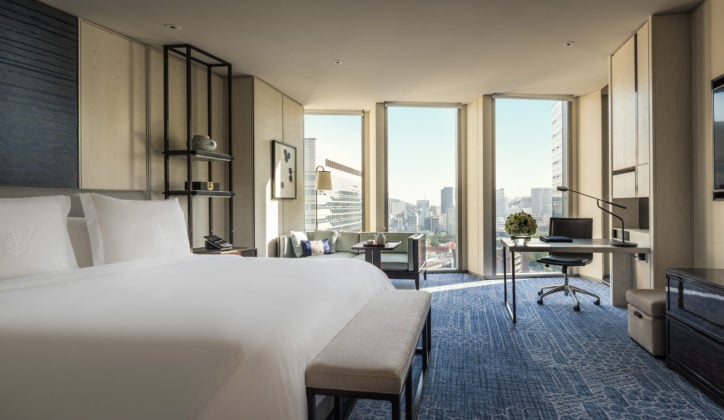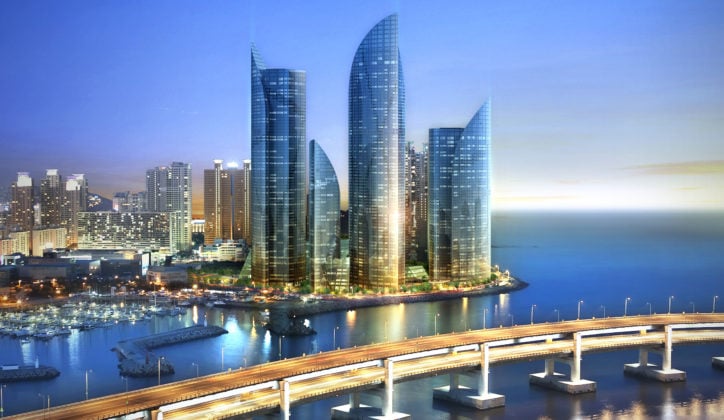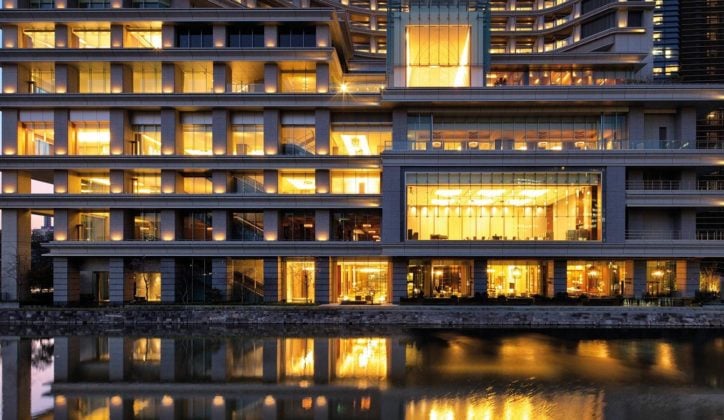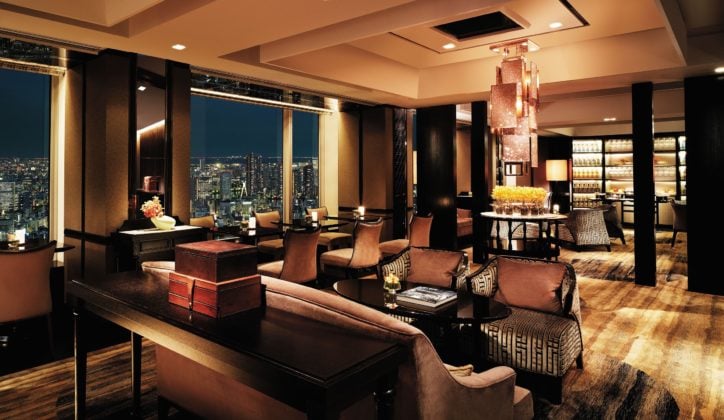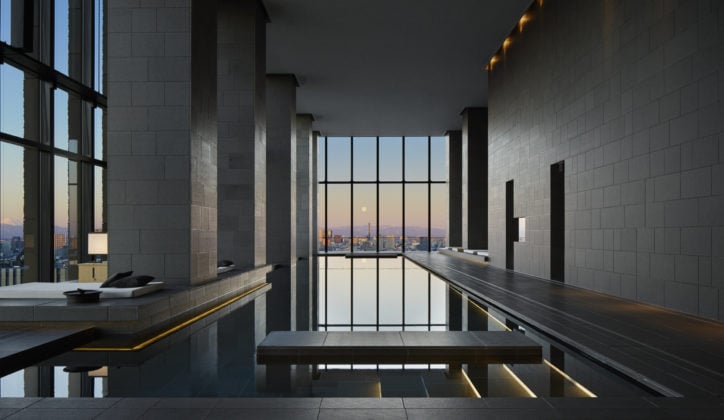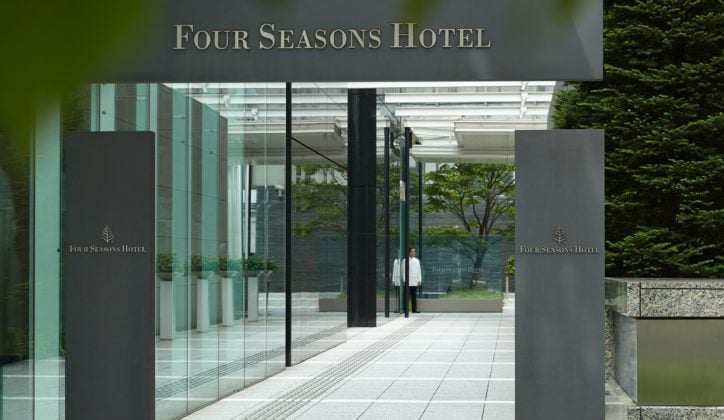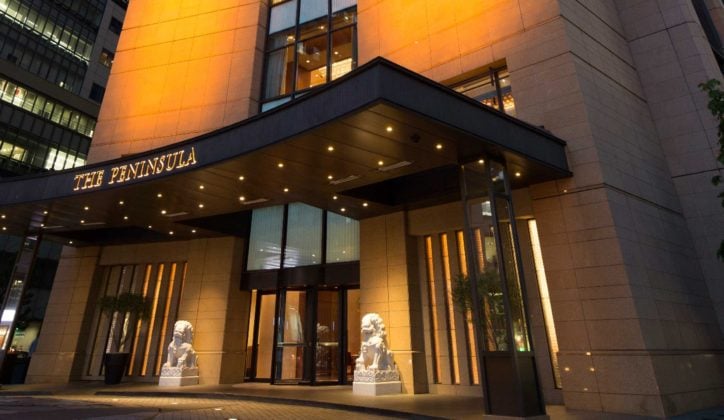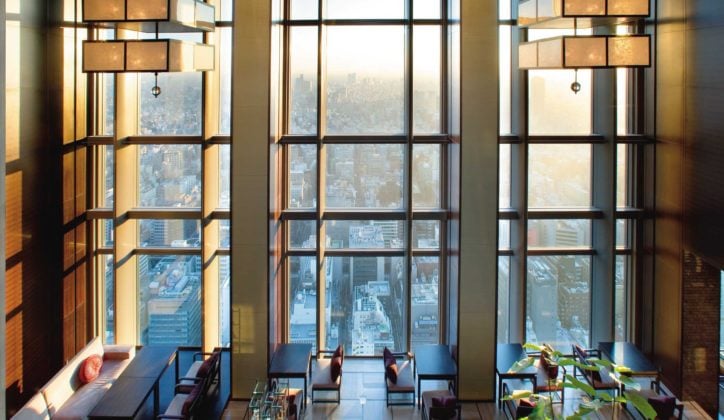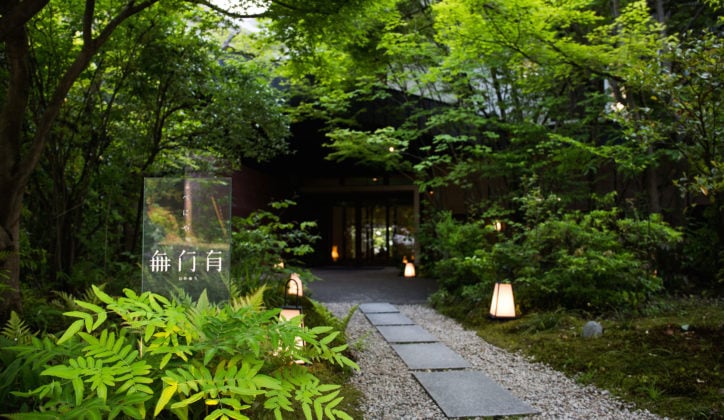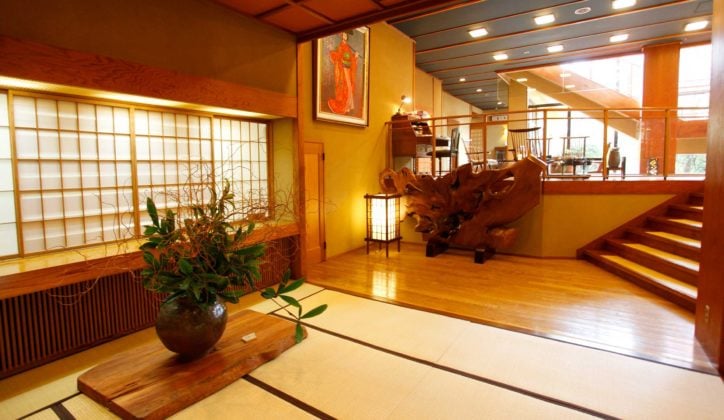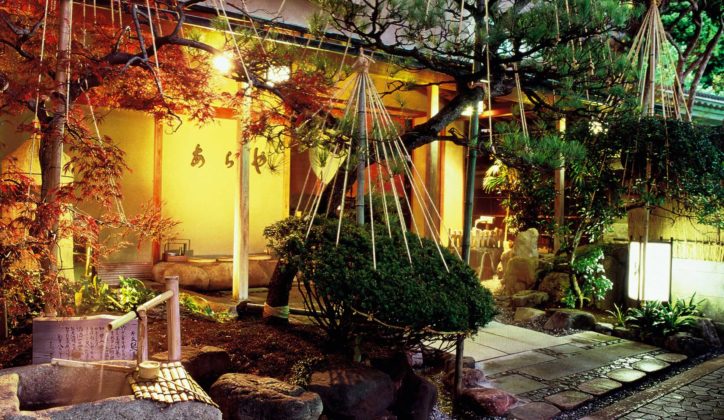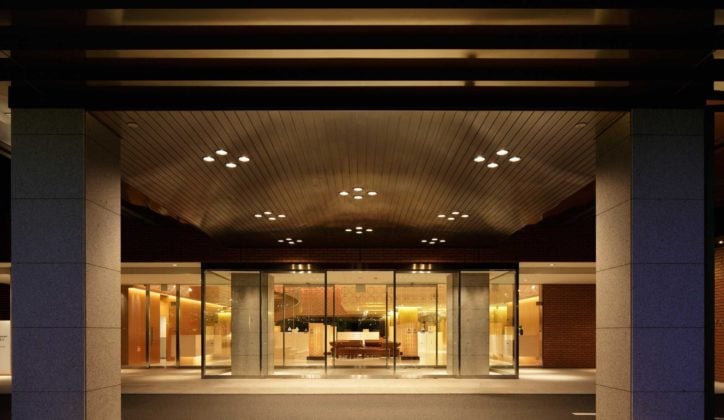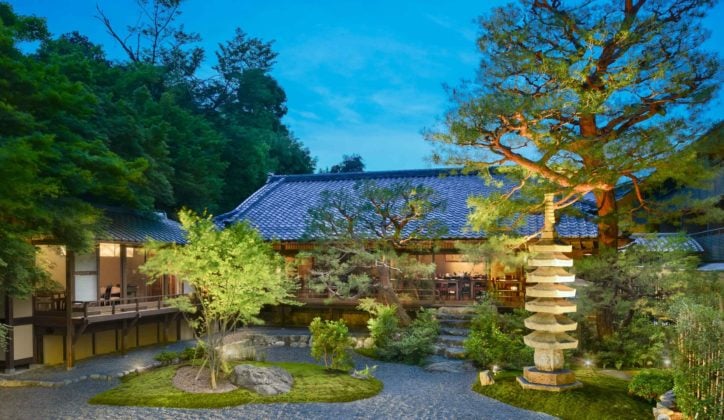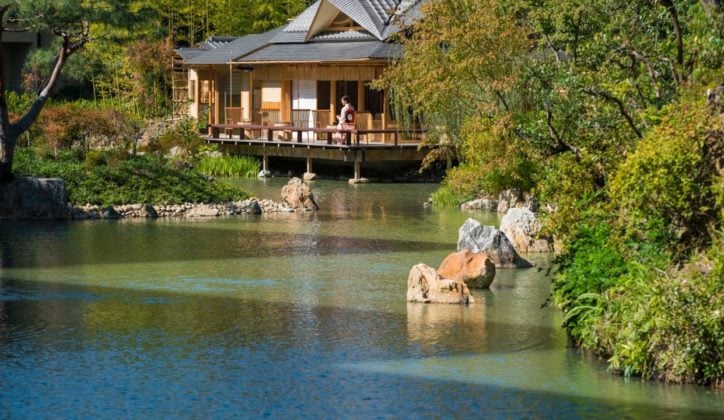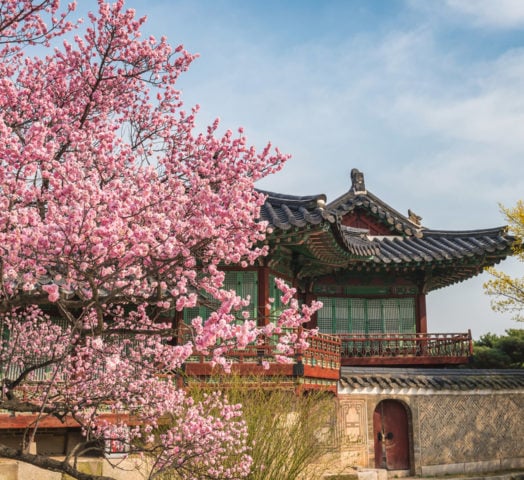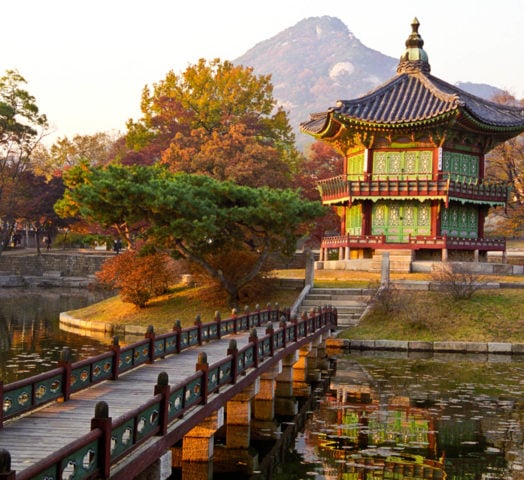A Cultural Discovery of South Korea and Japan
Trip highlights
- Enjoy street art, street food and eclectic museums in Seoul
- Discover Busan, Seoul’s buzzing second city
- Delve into ancient history at Gyeongju, the museum without walls
- Experience a tea ceremony, one of Japan’s famous cultural practices
- Explore the ancient Higashiyama Geisha District
- Tour beautiful temples and ornate shrines in Tokyo and Kyoto
Our bespoke trips include
We design one-of-a-kind journeys incorporating luxury in all its forms. Our bespoke trips include:
- Luxury accommodation throughout
- Privately guided tours
- Private transfers
- Meticulously selected experiences
- Expertise and support from your Jacada Concierge

- Days 1–4 Seoul
- Days 4–6 Busan
- Days 6–9 Tokyo
- Days 9–11 Yamashiro and Yamanaka
- Days 11–14 Kyoto
- Days 1–4 Seoul
- Days 4–6 Busan
- Days 6–9 Tokyo
- Days 9–11 Yamashiro and Yamanaka
- Days 11–14 Kyoto
Itinerary in detail
Every Jacada trip is tailored to your personal preferences and interests. Below you’ll find a sample itinerary to inspire your own custom-designed journey.
Three nights in capital Seoul
South Korea’s capital and by far its largest city with a metropolitan area home to over half the country’s entire population, Seoul is one of East Asia’s major centres of culture and commerce. A contrasting mix of bleeding edge technology and tradition, an incredible work ethic and serene Buddhist temples, utterly unique youth subcultures and conformity, it is a truly fascinating city.
Be shown around fabulous palaces and historic villages, try incredible street food, ascend the iconic N Seoul Tower and visit some eclectic museums, getting a sense of the capital’s storied past and exciting present.

Where you could stay
Seoul
Overview
In Seoul’s exclusive Gangnam District, the Park Hyatt’s towering glass structure encloses a thoroughly modern and understatedly elegant city hotel. It has an unmistakably Korean soul, littered as it is with select Korean antiques and works by local artists.
There are a grand total of 185 guestrooms including 38 suites, the generous space maximised by the floor to ceiling windows and incredible city views in every room. Bathrooms don’t scrimp on size either with deep soaking baths and a rain shower.
A particular highlight of the hotel is the 24th floor infinity pool with expansive vistas best at sunset. There’s also a modern fitness studio and spa.
The Park Hyatt Seoul has three dining options; Cornerstone, an open kitchen restaurant specializing in grilled meats and seafood prepared in wood-burning ovens, the 24th floor Lounge’s Korean dishes and light snacks, and the Timber House, with its three bars (Sake/Soju/Sushi, Whisky and Cocktails) and exquisite Japanese cuisine.
→ Find out moreSeoul
Overview
Located in the heart of Seoul, the Four Seasons is a luxury five-star hotel perfectly positioned to allow guests to soak up the energy of this vibrant city.
The hotel decor is a mix of old and new. Its 317 rooms and suites combine classic Korean motifs with a clean, modern aesthetic. Floor-to-ceiling windows ensure rooms are filled with natual light, and offer incredible views out over the city towards the mountains in the distance.
Eating and drinking at the hotel is a real treat, with seven restaurants and bars to choose from. Enjoy sushi and Japanese sharing plates at Kioku, Italian cuisine served straight from the open kitchen of Boccalino, Korean favourites at Maru, or Cantonese at the Michelin-starred Yu Yuan.
Indulge in a treatment in the spa, unwind in the Korean sauna, work out in the gym or take a dip in the indoor swimming pool. There is also a golf simulator where five 3D screens display courses from around the world and state-of-the-art technology means you can analyse swing and posture without having to step foot outside.
→ Find out moreDiscover Seoul
Palace
Village
Art
Market
Tower
Art
Market
Tower
Tower

Gyeongbokgung Palace discovery
Built in 1395, Gyeongbokgung Palace (also known as the Northern Palace) was the main Joseon Dynasty royal palace in Seoul. Among the city’s most popular sites, it is a symbol of South Korea and represents its national sovereignty. In the heart of the city, the complex expanded until the Japanese invasion of 1592 when it was reduced to ashes. It wasn’t until 1867 that, under Regent Heungseon Daewongun, a restoration was completed on a grand scale, with some 330 buildings within the palace walls including offices for royal and state officials, living quarters and gardens. Due to it’s importance, it was again demolished under Japanese occupation in 1915, with a second round of rebuilding and restoration beginning in 1990.

Visit Bukchon Hanok Village
Surrounded by Gyeongbokgung Palace and Jongmyo Shrine, Bukchon Hanok Village is home to hundreds of traditional houses called hanok that date back to the Joseon Dynasty. Today, many of these hanoks operate as cultural centers, guesthouses, restaurants and tea houses, providing visitors with an insight into Korean life here some 600 years ago.

Insa-dong Art Street adventure
Insa-dong, located in the heart of the city, is where you can find Korean art, crafts and antiques for sale. There is one main road in Insa-dong with alleys on each side. Within these alleys are galleries, traditional restaurants, tea houses and cafes. To keep the ambience, even international chains like Starbucks change their usual signage from English to Korean Hangeul.

Gwangjang Market visit
Gwangjang Market is one of the Seoul’s oldest street markets, an energetic place with some 5,000 independent stalls and shops selling food and clothing. It’s also famous for its delicious Mung-bean pancake (Bindaetteok).

N Seoul Tower tour
Standing atop Namsan Mountain, the N Seoul Tower was built in 1971, instantly becoming an iconic landmark of the city. It’s observation deck was opened in 1980 and the panoramic views it affords are a must for any visitor.
See more
The DDP
Scenic drive
Museum
Museum

Dongdaemun Design Plaza
Dongdaemun Design Plaza was built in 2014, designed by world famous architect Zaha Hadid. Also known simply as the DDP, it is is located in the center of the Dongdaemun area and has become the newest iconic landmark of Seoul after N Seoul Tower. Its sweeping neofuturistic shapes house large exhibition and art spaces, numerous shops and the Dongdaemun History & Culture Park which was made around historic remains uncovered during construction.

Bugak Skyway drive
The 19km-long Bugak Skyway runs along the northeast ridge of Bugaksan Mountain. Opened in September 1968, the road quickly became known as one of Korea’s most scenic driving routes with lovely views of Bibong and Munsubong peaks on one side and Namsan Mountain on the other side. Trees line the roadside and different flowers bloom each season. The skyway leads to an octagonal pavilion at the top called Palgakjeong, where visitors can get a panoramic view of the city.

Korea Furniture Museum
The Korea Furniture Museum offers a fascinating overview of Korean antique furniture and craftsmanship in a beautifully restored traditional house that hosts over 2,000 pieces.
Two nights in South Korea’s second city
Busan is South Korea’s second-most populous city after Seoul, and is the economic and cultural centre of southeastern Korea. Its port is among the world’s busiest and this energy can be found on its streets where gleaming high-rises fill the gaps between green mountains and the beach while elegant bridges span across the sea. Enjoy the energetic restaurant and nightlife scene, thronging fish markets and the rainbow houses of Gamcheon, and take a day trip to Gyeongju to see its 8th century temples and tombs.

Where you could stay
Busan
Overview
Park Hyatt Busan is located in the heart of the city’s upmarket shopping and beach district and has everything you need for a luxurious, five-star stay.
The hotel is deigned to look like a wave, fitting given its position on the tip of the Korean Peninsula. Inside are 269 rooms and suites with floor-to-ceiling windows that look out over the ocean and the Gwangan Bridge. Blonde wood and a neutral colour scheme create a light and calm space.
The Dining Room is the hotel’s grill and sushi restaurant, while the Living Room offers modern French cuisine. There is also a patisserie offering a selection of delicious sweet treats, as well as a lounge on the 30th floor where you can drink in the incredible cityscape views.
For unwinding, there is an indoor swimming pool, sauna, spa, fitness room and golf simulator.
→ Find out moreDiscover Busan
Culture
Shop
Food
History
Food
History

Gamcheon culture village
Gamcheon is a beautiful village of brightly coloured houses built in staircase-fashion on the foothills of a coastal mountain. The many alleys cutting through this community are vibrantly decorated with murals and sculptures created by the residents, among which you can find a small museum, art shops, tea rooms and workshops.

Gukje Market tour
One of the largest markets in Korea, Gukje sells everything from souvenirs and electronics to meat and fruit. There are also numerous food stalls.

Jagalchi Fish Market tour
Jagalchi Market, located by the sea across from Yeongdo-gu Island, famous across the country, selling both live, fresh caught and dried fish. Most of the people who sell fish are women, so the vendors here are called Jagalchi Ajumma, ‘ajumma’ meaning middle-aged or married woman in Korean.

UN Memorial Cemetery
The UN Memorial Cemetery in Korea honors UN soldiers from 16 countries and UN aids from five countries that were killed in battle during the Korean War from 1950-1953. This serene park spreads across a grassy plain area of 135,000 square meters. There are many annual events held here as April’s Tributary Ceremony of the Veterans of the Korean War, May’s American Memorial Day, June’s Korean Memorial Day, and October’s UN Ceremony Day.
Day trip to Gyeongju
Buddhist culture
Spiritual beliefs
Dynasty history
Dynasty history

Bulguksa Temple and Seokguram Grotto
Built in the 8th century on the slopes of Mount Toham, Bulguksa is a Buddhist temple complex and UNESCO World Heritage Site which contains a number of Korea’s most revered national treasures. Close by is the Seokguram Grotto, built in the same period as Bulguksa, which contains a monumental statue of the Buddha surrounded by realistic depictions of gods, Bodhisattvas and disciples, and is considered a masterpiece of Buddhist art in the Far East.

Daereungwon Tombs and Cheomseongdae Observatory
A number of larges, ancient burial mounds of kings and noblemen of the Silla Kingdom can be seen around Gyeongju at the Daereungwon Tomb Complex. The most famous of these is Cheonmachong which was excavated in 1973.Dating to the 7th century, Cheomseongdae Observatory is the oldest existing astronomical observatory in Asia.

Donggung Palace and Wolji Pond
Gyeongju Donggung Palace and Wolji Pond was the secondary palace site which was used by the crown prince. It also served as a banquet site for important national events and important visitors. After the fall of the Silla dynasty, the site was abandoned and forgotten. The pond was referred to as Anapji during the Goryeo and Joseon period. In the 1980s, pottery fragment with letters Wolji (a pond that reflects the moon) carved onto it was found, revealing the true name of the pond. After the discovery, the site was renamed to the current Donggung Palace and Wolji Pond.
Three nights in the sci-fi cityscape of Tokyo
Enjoy your time exploring the incredible metropolis of Tokyo, a city with an infectious energy like no other, where neon light futuristic architecture sits backed by the iconic Mount Fuji. A private English-speaking guide will accompany you around some favourite sights including shrines, Edo era streets, famous temples and for a traditional tea ceremony.
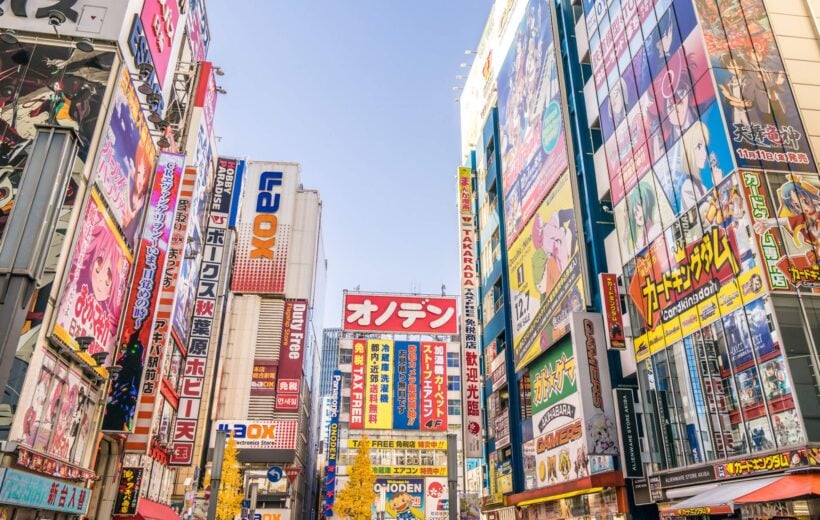
Where you could stay
Tokyo
Overview
Opposite the Imperial Palace gardens, bordered by a serene moat, the Palace Hotel Tokyo offers one of the best city views of any hotel here.
278 rooms and 12 suites take inspiration from the neighbouring gardens, with leafy carpet motifs, earthy tones and contemporary lines. Floor to ceiling windows, some with private balconies, make the most of the surrounding panorama.
The brand of luxury is innate but restrained, a modern take and tribute to omotenashi – Japanese hospitality. There are ten restaurants and bars here, with something for everyone, whether it’s French fine dining at Crown, authentic Japanese at Wadakura or refined Chinese at Amber Palace. Bars include the brooding Royal Bar, chic Lounge Bar Prive and the exclusive Club Lounge.
Also on site is an Evian spa for a range of French savoir-faire and Asian wellness therapies after a day out in the city.
→ Find out moreTokyo
Overview
After a smooth and speedy trip on the world-famous bullet train, you’ll find yourself at the elegant Shangri-La Tokyo, a haven of refinement set amid the relentlessly buzz of Tokyo, just opposite Tokyo Station.
With some of the largest rooms in the capital, the Shangri-La is a calming, sleek retreat from the 24-hour energy of Tokyo. There’s one lobby bar and two restaurants, including the Japanese restaurant Nadaman, located on the level 29, where you can sample Chef Takehiro Yoshida’s sautéed eggplant wrapped in thin slices of Wagyu beef.
The palette of dark wood, chocolate brown and burnt orange is complimented by low, amber lighting, exuding a sense of elegance and sophistication. Many of the spacious rooms have views across Tokyo, a scene that is best viewed at night.
That’s ideal, because you’ll be spending your days out and about exploring the endless fascinations of Tokyo. Within walking distance of the hotel, you’ll find the Ginza shopping district and the Imperial Palace in its park surroundings, and a 20-minute train ride will deliver you to the Buddhist Asakusa Senso-ji Temple, Tokyo’s oldest temple.
→ Find out moreTokyo
Highlights
- 84 rooms and suites
- Restaurant and bar
- Pool and fitness centre
- Spa
- Visit the Senso-ji Temple
Overview
Embracing the minimalism of traditional Japanese architecture, Aman is a stylish, bespoke hotel that will offer you an array of amenities and easy accessibility to the city’s sights.
Each of the 84 guest rooms and suites have unique layouts with uncompromising city views and every contemporary convenience. You’ll find the design inspiration evident throughout the hotel, from traditional Japanese residential structures to the use of classical materials such as camphor wood, washi paper and stone alongside modern luxurious fabrics. The hotel also offers an exquisite dining experience in their elegant mediterranean fine dining restaurant on the 33rd floor with views of the Imperial Palace Gardens and Mount Fuji.
Take a dip in the infinity pool on the 34th floor, high above the hustle and bustle of the city or head to the spa to relax after a long day of exploring the city. You’ll also enjoy Ginza, the upmarket shopping area just a pleasant 15 minute walk away.
→ Find out moreTokyo
Overview
Nestled in the heart of the central business district of Marunouchi, the Four Seasons Tokyo is a luxurious bolthole from which to explore this exciting and vibrant capital.
57 rooms and suites and bright and spacious and feature contemporary design and slick modern furnishings. Floor-to-ceiling windows flood the room with light and offers views out across the city skyline.
The hotel restaurant, Motif, serves French-inspired cuisine and adopts a ‘farm to table’ concept to offer exceptional freshness and quality. If it’s light
bites you’re after then you can enjoy tapas, a sumptuous afternoon tea or cocktails and nibbles at the bar.
When you’re not out sightseeing, relax and unwind at the spa which features jet showers, a sauna and a traditional onsen hot spring bath. There is also a fitness centre.
→ Find out moreTokyo
Overview
Built of amber Namibian granite, The Peninsula Tokyo is a construction of sheer opulence occupying a covetable position opposite the Imperial palace and Hibiya Park in the business district of Marunouchi. The hotels offers you commanding city views, elegant design, luxurious comfort, sophisticated facilities and extraordinary dining.
With 314 spacious guest rooms, this hotel is as large as it is luxurious. Designed by the renowned interior designer Yukio Hashimoto, the hotel intertwines rich earth tones, woods, stone and lacquers with modern design and functionality to create a stunning luxurious living environment. Customise your space with the use of the bedside panels allowing you to tweak the room’s ambience from the comfort of your bed.
Taste the delicious European Cuisine at Peter with stunning views from the hotel’s 24th floor over the Imperial Palace, or visit the Hei Fung Terrace for a sophisticated Cantonese dining experience. Make sure you don’t miss out on the sensational Japanese cuisine at Kyoto Tsuruya where you can watch the skilled chefs prepare Japan’s oldest and most loved culinary delights.
→ Find out moreTokyo
Overview
Relax in contemporary luxury at the Mandarin Oriental. Located in the heart of Tokyo, this hotel offers serenity above a ever-growing metropolis.
When you arrive in the 38th floor lobby, you’ll find yourself stunned by the dramatic views over the city’s skyline. The 157 guest rooms and 21 suites are heavily inspired by the Japanese aesthetic, blending futuristic luxury with a typical Japanese understanding of sense of space, aesthetically capturing the country’s rich culture within the modern luxury that Mandarin Oriental are renowned for.
Step out of your hotel and you’ll be in the middle of Tokyo’s metropolis, just a five minute walk from Ginza shopping district. After a busy day enjoying the buzz of Tokyo, relax in the Sense Tea Room or head to the Mandarin Bar and enjoy a signature cocktail by their award-winning chief bartender whilst listening to live jazz.
→ Find out moreMake itmine
Green spaces
On the water
Ancient streets
Tea culture
Ancient streets
Tea culture

A stroll in Hamarikyu Gardens
Take a stroll through Hamarikyu Gardens, an attractive landscape garden in central Tokyo that sits in green contrast to the skyscrapers it neighbours. Originally feudal lord’s Tokyo residence and duck hunting grounds during the Edo Period (1603-1867), it then later served as an imperial garden before being made into a public park.

Sumida River cruise
The Suminda River flows from Iwabuchi into Tokyo Bay. Cruise along the water admiring the city from a different angle and enjoy the leisurely pace on this historically significant waterway.

Sensoji Temple and Nakamise Dori Street
Today you’ll visit the Asakusa District, one of Tokyo oldest and best-preserved districts. We’ll stop at the Sensoji Temple, Tokyo’s oldest Buddhist temple, marked by its huge lantern. We then walk along the Nakamise Dori merchant street. The Nakamise Dori merchant street dates back to the Edo period when the temple’s neighbours were given special permission to open their shops in the approach to the temple. Your guide will show you the small streets of Asakusa, where you can still feel the presence of Ancient Japan.

Traditional tea ceremony
Experience a tea ceremony, one of Japan’s most famous traditional cultural practices, a part of culture that encompasses not only the making of tea, but also tea-room architecture, the appreciation of tea utensils and bowls and Zen Buddhism. The tea master will then teach you how to prepare and present ‘matcha’ powdered green tea.
Discover more
Shop
Sip
Climb
Discover
Climb
Discover

Ginza 'Deepachika' tour
Visit some of Ginza’s famous department stores, heading down to their basement floors called ‘depachika’ which house high-end food courts where Tokyoites buy their delicacies.

Craft brewery tour
You will visit one of the best craft-beer bars offering many varieties of beer, all crafted by small operating breweries using the highest quality malts, hops and yeasts and traditional techniques.

Roppongi Hills
Climb up to the Roppongi Hills observation deck located on the 52nd floor of the same building, where you can enjoy amazing 360 degree view of Tokyo. There are two relaxed cafés where you can take a break enjoying the sweeping sights over the metropolis.

Mori Art Museum
This museum takes an open attitude in introducing the newest art forms from all over the world, with its key emphasis placed on the concepts of being contemporary and international.
Bullet train to Kanazawa

Board a bullet train across Honshu Island to Kanazawa, where you will be met by your private English speaking guide at the station. Explore the city’s incredibly well-preserved old centre; Omicho Market, which local people regard as the “Kitchen of all Kanazawa”; the magnificent Kenrokuen Garden; and the ancient Samurai district of Nagamachi, before a visit to Nomurake, a former Samurai House.
Two nights of tradition in Yamashiro and Yamanaka
For more than a thousand years, Japanese holiday makers have been coming to Yamashiro and Yamanaka to sooth body and mind in their warm therapeutic waters. Two of the most celebrated hot spring resorts on the Kaga onsen circuit, the towns lie next to each other between the mountains and the sea in pretty countryside locales. You’ll stay in a ‘ryokan’, a type of traditional Japanese inn.

Where you could stay
Yamashiro and Yamanaka
Overview
Unwind in the calmness of this luxury Japanese ryokan, and it wont take you long to feel like you’re immersed in tranquility. You can start your day with yoga, take part in a traditional tea ceremony and finish it the hotel’s hot springs.
Combining Japanese and western decor, the 17 guest rooms and suites are all decorated uniquely. Comprising of solely Japanese-style rooms, Western-style rooms and some of which are a hybrid between the two, this ryokan is like no other. The hotel’s architecture elegantly emphasises contrast between light, shade and neutral colours creating a peaceful atmosphere for total relaxation.
During your stay taste the phenomenal Kaiseki cuisine in the inclusive 10-course meal. With a strong cultural emphasis on fresh, local produce enjoy the exquisite flavours of this region.
→ Find out moreYamashiro and Yamanaka
Overview
This luxury ryokan is located in the small hot springs village of Yamanaka, which is untouched by time. Surrounded by thick forested hills and stunning natural beauty, find yourself immersed in rich Japanese culture whilst you unwind at this tranquil inn.
The 10 guest rooms and suites are arranged in the traditional sukiya style of a tea ceremony pavilion. The decor is discreet and elegant from the tatami walkways to the original painted screens, the luxury and exclusive ambience of this ryokan is undeniable. During your stay relax in the natural hot springs renowned for their soothing and curative properties.
The piece de resistance of this ryokan is the cuisine. During your stay you will be served in your room, feasting on the delicious true Japanese kaiseki cuisine. Taste the exquisite local ingredients you are in for a true culinary delight.
→ Find out moreYamashiro and Yamanaka
Overview
Dating back over 800 years, this ryokan is immersed in Japanese history. Relax in the hotel’s onsen which have won international acclaim.
In authentic Japanese Sukita style, the 18 luxury guest rooms face the tranquil zen-designed garden. The natural beauty of the garden is echoed in the rooms, where the traditional Japanese use of light and space is evident, from the washi-paper sliding doors and tatami-mat flooring, you’ll find yourself emerged in this rich culture.
During your stay you will dine in on an abundance of local cuisine, tasting delicacies from the nearby sea and the bountiful land that surrounds the area. Find yourself totally emerged in local culture, even down to your clothing, this will be an experience you will never forget.
→ Find out moreMake it mine
Culture
Art

Higashiyama Geisha District
Visit the ancient Higashiyama Geisha District. Built in 1820, it is reminiscent of feudal times with wooden lattice fronts on the old geisha houses. Visit the teahouse at Kaikaro to learn more about the history and traditions surrounding geishas.

Kanazawa Museum of Contemporary Art
Visit the Kanazawa 21st Century Museum of Contemporary Art, an architecturally striking building and one of the most successfully-run museums in Japan. The museum focuses on integrating the design of its space with the program and features many up-coming Japanese artists, as well as permanent installations by renowned international artists, such as Leandro Ehrlich and Anish Kapoor.
Three nights in cultural Kyoto
Kyoto is where you’ll find ancient and contemporary Japan collide in a fascinating cultural hub. As the country’s seventh largest city with a population of 1.4 million people, it’s put on a thoroughly modern face, but the former imperial capital was spared much of the destruction of World War II and the city is unique for its abundance of prewar buildings including grand palaces, traditional ‘machiya’ townhouses and ornate, ancient shrines. As well as seeing the best of these, be shown around the Geisha District and visit nearby the beautiful old city Nara to meets its famous deer.

Where you could stay
Kyoto
Overview
Located in the heart of Kyoto, the stylish Hyatt Regency offers spacious rooms and excellent hospitality. This hotel is perfect for those looking for a relaxed atmosphere whilst exploring the rich culture of Kyoto.
Each of the elegant 189 guest rooms and suites are decorated in light neutral tones combining the aesthetics that Japan is famed for with the style and comfort of western living. During your stay marvel in the culinary excellence offered by the Hyatt, from authentic Italian cuisine to a French grill to flavourful Japanese dishes, there is something for everyone at this luxury hotel.
Explore the wonders of Kyoto, with countless temples and shrines and other historical structures, marvel in this city’s fascinating culture. After a busy day of exploring why not visit the hotel’s spa for a relaxing massage or visit The Touzan Bar to taste the hotel’s boutique sake collection.
→ Find out moreKyoto
Overview
Set along a river in the beautiful Arashiyama countryside within the grounds of the Tenryu-ji temple, Suiran is composed of two 100 year-old buildings which have been carefully renovated to meet the high standards of a luxury resort.
With just 39 rooms, the Suiran offers guests a personal experience at a traditional Japanese hotel. Interiors have been designed in culturally significant hues and traditional motifs and there’s a lounge, restaurant, fitness centre and spa to enjoy.
Poised in western Kyoto’s scenic Ukyo-ku, 30 minutes drive or so away from the city centre, the hotel is a perfect retreat from the hustle and bustle of the city and an ideal location for cherry blossom and autumn leaves viewing.
→ Find out moreKyoto
Overview
Traditional Japanese aesthetics can be found throughout the luxury Four Seasons in the centre of historic Kyoto. Lanterns brighten interiors filled with artisanal furnishing and sleek hardwood floors while fusuma screens and urushi lacquerware create an engaging cultural experience.
The guest rooms enjoy balconies with incredible views overlooking the fascinating cityscape, Shakusuien Pond Garden or the distant Higashiyama Mountains. Upon imperial purple carpets, a custom Four Seasons bed waits after freshening up in a private rain shower oasis. The suites contain spacious living areas with sofas, coffee tables and marble-topped desks, natural light streaming in through floor-to-ceiling windows. Special touches such as shoji paper lamps and tatami-inspired wall panels contributes to a rich and contemporary residence.
Savouring views of the beautiful 12th-century Myoho-in Temple, the Presidential Suite consists of Asa-no-ha hexagonal patterns and an approach to artisanal décor that authentically and intimately captures the essence of Japan.
The Four Seasons has two restaurants. Brasserie boasts a relaxed atmosphere and a simple yet delicious menu. Locally-sourced ingredients combined with modern cooking techniques contribute to seasonal dishes throughout the day and into the evening.
Sushi Wakon operates under the skilled hand of Michelin-starred Chef Rei Masuda, preparing a fine-dining extravaganza at the 200-year-old, 10-seat Hinoki counter.
Drink tea while relaxing beside the 800-year-old pond garden, taking in the true essence and mystery of the Land of the Rising Sun. Additionally, the Spa is a haven of healing, restoring your mind and body to a state of blissful serenity.
→ Find out moreTokyo
Overview
The Ritz Carlton Tokyo occupies the top nine floors and the first three levels of the 53-storey Midtown Tower in the heart of the capital. It offers incredible views out over the skyline and towards Mount Fuji, and it is a great base from which to explore this vibrant and exciting city.
There are 245 spacious and elegant rooms, many of which offer wonderful views out over Tokyo. Guests are spoiled for choice when it comes to dining, with modern French and
traditional Japanese on offer, as well as grilled seafood and meat at Towers restaurant. There is also a cafe and deli, lobby lounge and a bar on the 45th floor, which offers one of the best views of the city.
One flight higher, on the 46th floor, is the Ritz Carlton’s spa, with indoor lap pool, dry sauna, steam sauna, treatment rooms and fitness studio.
→ Find out moreDiscover Kyoto
Temples
History
Culture
Foodie
Culture
Foodie

Kinkaku-ji and Ryoan-ji Temples
Visit the Kinkaku-ji ‘Golden Pavilion’ temple. Built in 1397 to serve as a retirement villa for Shogun Ashikaga Yoshimitsu, Kinkaku-ji served as the inspiration for the Ginkaku-ji the Silver Pavilion which was built by the Shogun’s grandson.
We then continue to the serene Ryoan-ji Temple which is celebrated for its rock garden, comprised of nothing but clay walls, raked sand and 15 rocks.

Visit Sanjusangendo Hall
You’ll be brought to Sanjusangendo Hall where we’ll feel the serene atmosphere of the temple. Famed for its 1001 statues of Kannon, the goddess mercy, Sanjusangendo was founded in 1164 and its present structures date from 1266.

Kodaiji Temple and gardens
Kodaiji Temple, a temple of the Rinzai (Pure Land) school of Zen Buddhism which was founded during the Momoyama-period by the wife of Toyotomi Hideyoshi, the powerful general who unified Japan at the end of the 16th century. Kodaiji is interesting for its formal gardens and bamboo grove that leads to two famous teahouses.

Nishiki market
A narrow shopping arcade only 400 metres in length with just over 100 vendors, Nishiki market is the perfect place for you to discover Kyoto’s distinctive culinary delicacies and be surprised by the sights, the sound and the smells. Aritsugu, which features a variety of excellent kitchen tools, is a recommended shop to visit.
Day trip to Nara

Explore the ancient capital with an expert guide. Begin at Nara Park, commonly known as “Deer Park,” home to hundreds of freely roaming deers, regarded as messengers of the gods and symbol of the city.
Visit Kasugataisha Shrine, established in 768AD as the shrine of the powerful Fujiwara Family, with a magnificent interior with numerous bronze hanging lanterns, as well as stone lanterns that lead up to the shrine. Then, the gigantic Todaiji temple, one of the largest wooden buildings in the world and surrounded by the giant statue of Buddha Virocana.
Finish in Naramachi, the former merchant district that features traditional warehouses, homes, boutiques, shops, cafes and restaurants.
We, as a family, have been privileged to go on a number of luxury holidays to some interesting places - from Peru to Pakistan and Mongolia to Mozambique - and this trip was right up there. Thank you for making it so special. To speak candidly it was a risk to move away from the more established tour operators that…
Why book with Jacada

Personalised design
We’ll plan your trip around your personal interests, tastes and preferences, providing honest advice based on first-hand knowledge.

Authentic experiences
Our expert guides and brilliant Concierges are hand-picked for their ability to bring your destination to life with care and passion.

Positive Impact
We seek out unforgettable experiences that benefit both local communities and the environment.


































